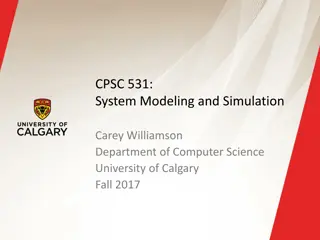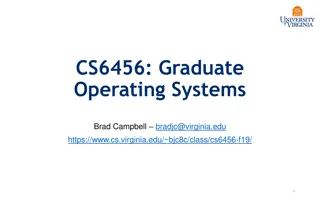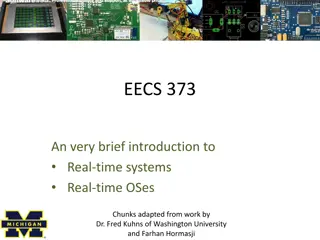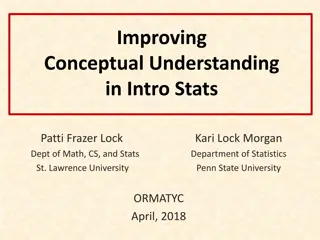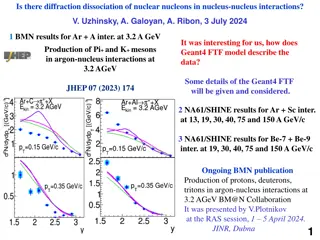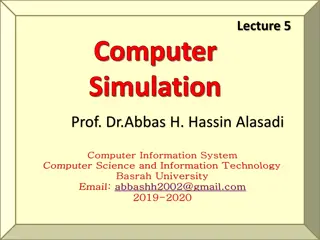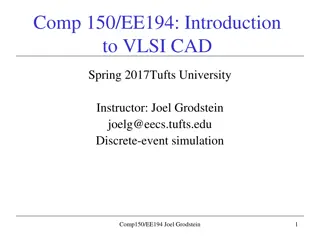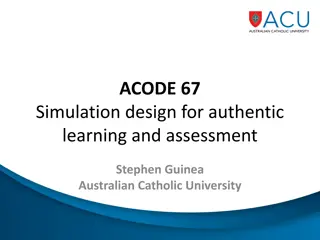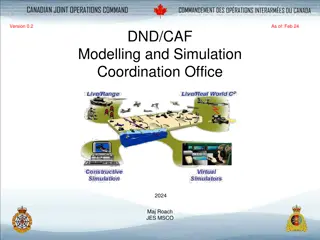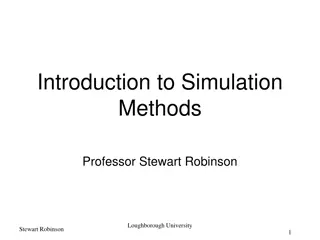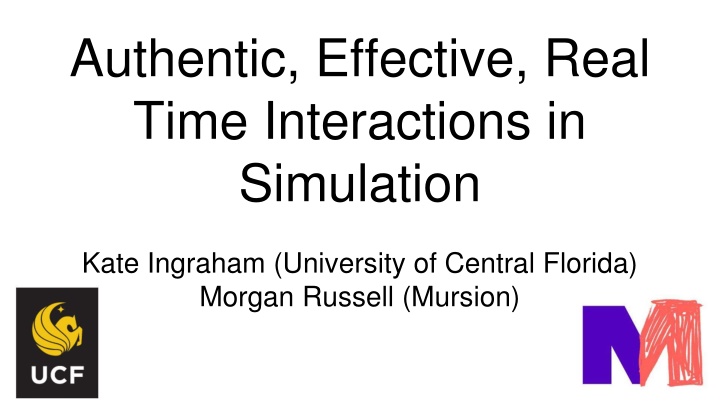
Enhancing Real-Time Interactions in Simulation: Overview and Implementation
In this comprehensive exploration of real-time interactions in simulation, Kate Ingraham and Morgan Russell delve into the key aspects of authentic and effective interactions. Covering topics such as learning theory, feedback cycles, scenario design, implementation, and future potential analytics, this content provides valuable insights into the world of simulation technology. With a focus on improving communication skills and building rapport, the discussion touches upon the importance of training materials and ongoing performance excellence. The integration of avatars, environments, and engagement strategies offers a holistic approach to enhancing interactive experiences.
Download Presentation

Please find below an Image/Link to download the presentation.
The content on the website is provided AS IS for your information and personal use only. It may not be sold, licensed, or shared on other websites without obtaining consent from the author. If you encounter any issues during the download, it is possible that the publisher has removed the file from their server.
You are allowed to download the files provided on this website for personal or commercial use, subject to the condition that they are used lawfully. All files are the property of their respective owners.
The content on the website is provided AS IS for your information and personal use only. It may not be sold, licensed, or shared on other websites without obtaining consent from the author.
E N D
Presentation Transcript
Authentic, Effective, Real Time Interactions in Simulation Kate Ingraham (University of Central Florida) Morgan Russell (Mursion)
Scenario Design Theory and Process Alignment is Key. Defined Skills Simulation Challenges Feedback
Implementation Design System Avatars and environments Training materials Delivery Ongoing interactive performance excellence
Future Potential Analytics Turn taking Engagement Articulation rate/fluency FOR LEARNER REVIEW AFTER SIMULATION Listening Discreetly measurable objectives Influence Rapport Building Emotional Prosody


